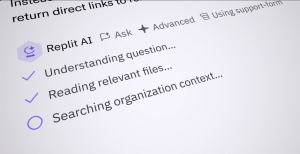The Future of Ecommerce With Web 3.0
![]() The internet continues to evolve and as such, new retail business strategies are constantly being developed that take advantage of internet technology. In the first two evolutionary phases of the internet, most retail strategies chased technology; however, as the internet has firmly established itself as an integral part of retail business marketing and sales success, a much more proactive approach is being taken by ecommerce business strategists.
The internet continues to evolve and as such, new retail business strategies are constantly being developed that take advantage of internet technology. In the first two evolutionary phases of the internet, most retail strategies chased technology; however, as the internet has firmly established itself as an integral part of retail business marketing and sales success, a much more proactive approach is being taken by ecommerce business strategists.
Developers who once waited for trends are now creating internet technologies instead. The enormous customer base created by social media has been realized and now the next evolutionary phase of internet, Web 3.0, is just on the horizon and is already creating exciting new internet retail strategies and technologies that will push ecommerce to great new levels.
Ecommerce and the Web: The Beginning
Since its first arrival, retail business has been seeking out every opportunity to capitalize on the power and potential of the internet. In its earliest form, the internet was no more than a means to bring static photo and pages of readable text to those who surfed the web. While this was little more than an on-line catalog per se, it was the first step in reaching out to curious new web browsers with a hit and miss chance of capturing a new customer along the way. Ecommerce was born in what was later labeled Web 1.0 or the “readable” web.
The internet was quick to evolve and it was not long before the technology to interact via World Wide Web arrived. Social networking hit the scene and completely re-wrote the book on how people looked at and used the internet. No longer just a large library of static informational pages of text and photos, the internet was now dynamic and quickly became a part of people’s everyday lives. Web 2.0 brought us the “writable” internet and with more and more people engaging with the social media trend, marketing technology took advantage of great opportunity such as targeted advertising technologies that monitored the web search requests.
This brought users relevant and even localized product advertisement. Ecommerce was truly developing, but still had not really come into its own as, from a marketing perspective, it was still chasing technology, but that is going to change all too soon.
Web 3.0: The Future
Today, internet marketers are no longer waiting to adapt to the next great breakthrough the internet offers them, instead they are taking a proactive approach in creating the next internet evolution, Web 3.0, the Transcendent Web!
![]() From an ecommerce perspective, the aim of Web 3.0 is to capitalize on the expansive social web network. Through new and enhanced methods of interpreting internet user’s habits, it’s possible to learn more of the specifics interests of the shopper (inside and outside of their current behavior,) and bring them a very personalized ecommerce shopping experience. Unlike today’s targeted advertising which may, for example, detect that a user performed an internet search for wedding dresses, which in turn results in advertisement after advertisement of non-specific wedding dresses.
From an ecommerce perspective, the aim of Web 3.0 is to capitalize on the expansive social web network. Through new and enhanced methods of interpreting internet user’s habits, it’s possible to learn more of the specifics interests of the shopper (inside and outside of their current behavior,) and bring them a very personalized ecommerce shopping experience. Unlike today’s targeted advertising which may, for example, detect that a user performed an internet search for wedding dresses, which in turn results in advertisement after advertisement of non-specific wedding dresses.
In a Web 3.0 scenario targeted advertisements may result in non-traditional wedding dresses for plus size, middle aged women, better fitting the profile of an individual and making these advertisements far more useful and likely for a sales conversion. Another example might be searching for a movie to watch.
Where the last generation of movie advertisement might bring listings of local cinemas, a Web 3.0 era search might result in horror movies only playing after 10 pm at two specific cinemas, all based on historical information that has been captured and analyzed through the collection social networking and internet browsing data.
Even sentence structure and behavioral data patterns of an individual that can be compared to others and yield insight.
For this revolution in functionality to take place, the web in general will need to grow more accustomed to non-conventional data streams and the sharing of data across multiple applications. Most services attempt to collect information in a bubble, offering some value in return for the exchange of data, yet they are entirely dependent on user submissions and often reliant on if the user has to log into a service before visiting them.
Web 3.0: Predictions
.
Where I’d like to see 3.0 go is an internet that can come to terms with the value that shared data brings, without harming their sense of privacy. This is idealistic, as privacy is surely important, and the value and security must be proven before the pitchforks will be put down. Does the convenience of an entire home page (not landing page) of clothing tailored for me outweigh the loss I suffer for them know my gender and build?
![]() Am I losing something if it takes me half the time to find a movie showing, but that movie theatre knows I only see late screenings? The public will have to decide the answer to this question, but the brave marketers who get there first have so much to gain.
Am I losing something if it takes me half the time to find a movie showing, but that movie theatre knows I only see late screenings? The public will have to decide the answer to this question, but the brave marketers who get there first have so much to gain.
Realistically, the first steps will be about realizing the lines of communication we already have in place. The Semantic Web, a collaborative, international movement, will have a large role to play in building Web 3.0. Lead by the World Wide Web Consortium (W3C,) the idea is to better structure the internet at large. Standardization is a large part of that, but one less invasive way of understanding your consumers is to better know where they’ve been.
Visitors to a brand have to come from somewhere, and it’s not that current marketers don’t know where they come from, there’s just no easy way for your system to know, realistically, tell that site apart from the web at large. If standardized language can let brands know, seamlessly, what kinds of site they came from (male clothing store, vintage record seller, home improvement outlet,) the process of serving them topical content can become more feasible, without worrying about customer profiles and logins.
Of course, this isn’t to discount the unbridled potential of social profiles. Through the integration of social profiles, the Semantic Web, the technology that will allow the storing of vast amounts of data and the use of artificial intelligence to interpret and filter data, Web 3.0 will be the next great revelation to ecommerce. Web 3.0 is still very much in its infancy stage but it is coming so get prepared!
About The Author
![]() Hassan Bawab is the Founder and CEO of Magic Logix, an interactive digital marketing agency in Dallas, TX. Magic Logix combines dynamic website development, professional website design, SEO and integrated online marketing to drive new leads with high conversion. He is committed to high standards in every aspect of his business and actively leads his team of professional developers, designers, and online marketers. Key to their success is Hassan’s emphasis on clear, open communication among employees and with clients. Hassan believes that the best CEO is also the best listener.
Hassan Bawab is the Founder and CEO of Magic Logix, an interactive digital marketing agency in Dallas, TX. Magic Logix combines dynamic website development, professional website design, SEO and integrated online marketing to drive new leads with high conversion. He is committed to high standards in every aspect of his business and actively leads his team of professional developers, designers, and online marketers. Key to their success is Hassan’s emphasis on clear, open communication among employees and with clients. Hassan believes that the best CEO is also the best listener.
A message from John Furrier, co-founder of SiliconANGLE:
Your vote of support is important to us and it helps us keep the content FREE.
One click below supports our mission to provide free, deep, and relevant content.
Join our community on YouTube
Join the community that includes more than 15,000 #CubeAlumni experts, including Amazon.com CEO Andy Jassy, Dell Technologies founder and CEO Michael Dell, Intel CEO Pat Gelsinger, and many more luminaries and experts.
THANK YOU









